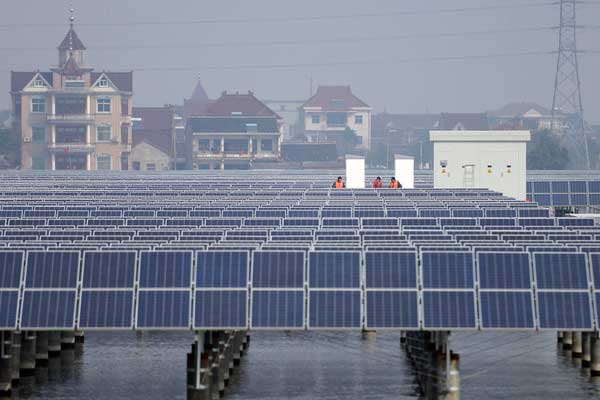Body mulls grids to link continents
 |
|
A photovoltaic power generation network in Jiaxing, Zhejiang province, which started operation last year. [Photo provided to China Daily] |
An Asia-based group of entrepreneurs aims to build a transcontinental supergrid that links the continents by 2050.
The Global Energy Interconnection Development and Cooperation Organization, a China-led organization, plans to put intercontinental grids in place in each continent by 2030, after setting up a China-wide super grid by 2020.
The project is for globally interconnected smart grid based on ultrahigh-voltage technology. The power can be generated, transmitted and consumed on a massive scale worldwide, from whenever there's a big power load to somewhere else in the world where demand matches a generation spike.
The Beijing-based organization aims to boost the proportion of clean energy to the global primary energy bank to 80 percent by 2050.
"Global energy interconnection is a must on the path to energy reform and sustainable development," said Liu Zhenya, chairman of the organization.
The organization has also proposed a layout for Asian energy interconnection to accelerate the development of clean energy in northern China, Mongolia and Russia, and transmit electricity to eastern China, South Korea and Japan.
Liu said conditions were now ripe for building Asian energy interconnection with ultrahigh-voltage transmission technologies and smart grids becoming more mature.
The organization estimated that achieving global energy interconnection by 2050 would cost about $50 trillion.
Regions with abundant clean energy resources and relatively developed power grid infrastructures would take the lead to develop large-scale clean energy power plants and intercontinental interconnections, said Chen Gesong, deputy director of the organization.
Chen said that although geopolitics might pose an obstacle to the project, it was the ultimate goal to achieve a global supergrid. The larger the grid, the more stable the supply would become, as it would be less dependent on individual sources, he added.
- Asian energy interconnection inevitable for cleaner future: Chinese expert
- China's state grid to develop global energy interconnection
- Chinese IT giant offers smart grid solution to power companies in Africa
- Liangjiang smart grid construction passes State Grid's inspection
- China beefs up its smart grid
















